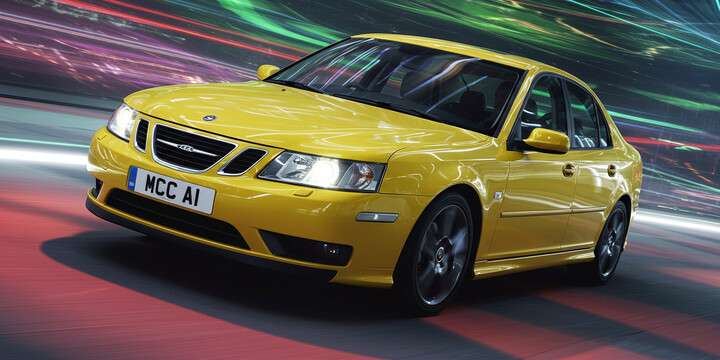
SAAB 9-3 (2007-11) 4DR SALOON 2.0T 210 AERO XWD
The SAAB 9-3 (2007-11) 4DR SALOON 2.0T 210 AERO XWD is a stylish and sporty saloon that stands out in the UK's used car market. Known for its sleek design and dynamic performance, this model is especially popular among drivers seeking a vehicle that combines comfort with a touch of luxury and sporty handling. Its distinctive 2.0T engine delivers a lively driving experience, making it a great choice for those who enjoy spirited drives or need a reliable car for daily commuting. Typically, this SAAB model is used by individuals or small families, and with an average mileage of around 86,162 miles, it has been a dependable choice over the years. It’s best suited to drivers who value a unique, Scandinavian-designed saloon that offers a combination of safety, performance, and distinctive styling.
What makes the SAAB 9-3 (2007-11) 4DR SALOON 2.0T 210 AERO XWD particularly notable is its reputation for solid build quality, all-weather capability thanks to its XWD (all-wheel-drive) system, and its stand-out aerodynamics. In comparison to rivals, it’s recognized for offering a more unique driving experience with a focus on safety and comfort. The average valuation at private sale is around £2,772, making it an affordable yet distinctive choice for used car buyers. Whether you're a first-time driver looking for a reliable saloon or someone seeking a vehicle with a bit of flair and safety, the SAAB 9-3 2.0T Aero XWD is definitely worth considering in the market for a stylish, practical, and engaging car.

average use

The most recent mileage readings for the SAAB 9-3 (2007-11) 4DR Saloon 2.0T 210 Aero XWD show an evenly distributed spread across three mileage ranges: 50,000 to 60,000 miles, 80,000 to 90,000 miles, and 150,000 to 160,000 miles. Each range accounts for approximately one-third of recordings (33.3%). This distribution suggests that the vehicle varies widely in usage, with a significant number of cars existing at both relatively low and high mileages, possibly indicating the model's durability and varying ownership patterns.

vehicle values

The private sale valuations for the Saab 9-3 (2007-11) 4DR Saloon 2.0T 210 Aero XWD indicate an evenly distributed market, with approximately one-third of the vehicles valued between £1,000 and £2,000, another third between £3,000 and £4,000, and the remaining third between £2,000 and £3,000. This balanced spread suggests a wide variation in vehicle condition, age, or mileage within this model, resulting in a fairly even distribution of private sale prices across these three brackets.

production years

The data indicates that, among the sample vehicles of the SAAB 9-3 (2007-11) 4DR Saloon 2.0T 210 Aero XWD, two-thirds (66.7%) were manufactured in 2010, while the remaining third (33.3%) were made in 2011. This suggests a higher production or sales focus on the 2010 model year within this sample. It aligns with typical manufacturing patterns where certain model years dominate the availability in the used vehicle market.

colour popularity

The data indicates that among the SAAB 9-3 (2007-11) 4DR Saloon 2.0T 210 Aero XWD models, black is the predominant main paint colour, accounting for 66.7% of vehicles. White, on the other hand, is less common, representing 33.3% of the sample. This suggests a strong preference or tendency for these vehicles to be finished in black rather than white.

ownership cycle

The data indicates that the registered keepers for the Saab 9-3 (2007-11) 4DR Saloon 2.0T 210 Aero XWD are evenly distributed among three groups: 3, 5, and 6 keepers, each comprising approximately one-third of the vehicles. This suggests a relatively balanced turnover, with no prominent dominance of a particular number of previous owners. Such a pattern could imply consistent ownership durations and potentially moderate vehicle usage or retention rates within this model.

engine choices

The data indicates that all vehicles of the Saab 9-3 (2007-11) 4-door saloon 2.0T 210 Aero XWD are equipped with a 2.0-litre petrol engine. Notably, the engine capacity data is uniformly available for models from 1998, suggesting complete coverage for this specification within the dataset. Overall, this model consistently uses petrol as its primary fuel type, highlighting its engine configuration and fuel preference.












